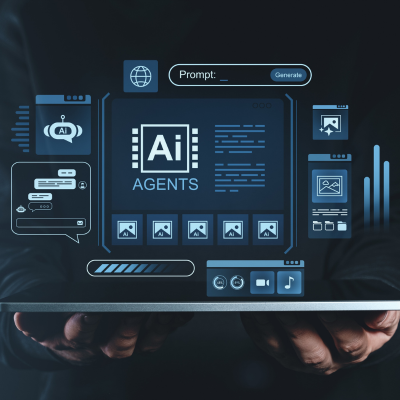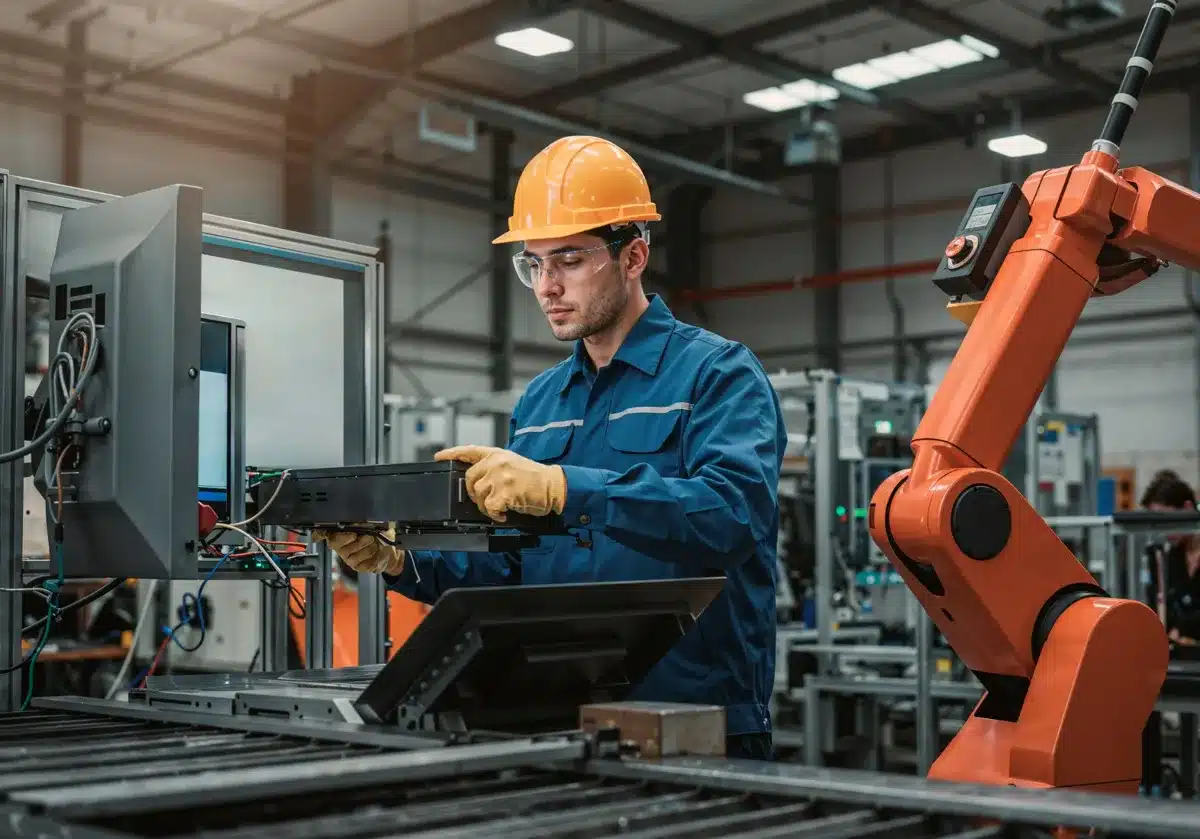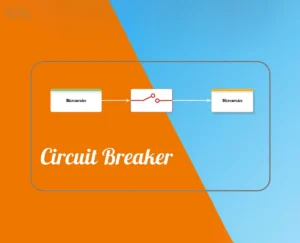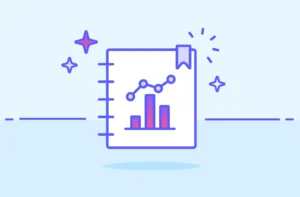AI in manufacturing is transforming traditional factories into smart factories—highly automated, data-driven, and adaptive production environments that deliver unprecedented efficiency, quality, and flexibility. As Industry 4.0 reshapes industrial landscapes, AI technologies such as predictive maintenance, AI robotics, digital twins, and industrial automation empower manufacturers to anticipate challenges, optimize operations in real time, and innovate faster than ever before. This evolution is not just about automation but about creating intelligent systems that learn and improve continuously, enabling manufacturers to thrive in an increasingly competitive and dynamic market.
This article explores how AI in manufacturing is revolutionizing production efficiency and quality, highlights emerging trends and advanced strategies for success, and presents a compelling business case study. It also positions the Software Engineering, Agentic AI and Generative AI Course offered by Amquest Education as the premier program for professionals eager to lead smart factory transformations with cutting-edge AI expertise.
The Evolution of AI in Manufacturing
Manufacturing has long been a cornerstone of industrial economies, traditionally relying on manual labor and mechanization. The digital revolution introduced automation and connectivity, laying the groundwork for intelligent manufacturing systems.
- Initially, automation focused on robots performing repetitive tasks to improve speed and reduce errors.
- The Industry 4.0 era expanded this with IoT sensors and devices enabling real-time data collection and communication across production lines.
- AI now leverages this data, applying machine learning and advanced analytics to predict equipment failures, optimize workflows, and enable autonomous decision-making.
A pivotal innovation is the integration of digital twins—virtual replicas of physical assets and processes—that continuously update using IoT sensor data. These digital models provide manufacturers with a dynamic, real-time view of operations, enabling simulation, anomaly detection, and proactive optimization. This synergy between AI, IoT, and digital twins forms the backbone of smart factories, where human workers and intelligent systems collaborate to maximize productivity and quality.
Latest Features, Tools, and Trends in AI for Smart Factories
Predictive Maintenance: Minimizing Downtime and Costs
Predictive maintenance stands out as a game-changer in manufacturing. AI models analyze sensor data—such as vibration, temperature, and operational cycles—to forecast equipment failures before they occur. This foresight enables maintenance scheduling during planned downtimes, reducing unplanned interruptions and costly repairs.
For instance, automobile manufacturers deploy AI-driven predictive maintenance on assembly robots, achieving significant reductions in downtime and maintenance costs.
AI Robotics and Collaborative Robots (Cobots)
AI-powered robotics have evolved beyond traditional automation. Cobots, designed to safely work alongside humans, handle repetitive or precision tasks with enhanced speed and accuracy. Electronics manufacturers utilize cobots for component placements, improving assembly line throughput and reducing error rates. These robots enhance workplace safety by taking on hazardous or physically demanding tasks, fostering a more productive and safer factory environment.
Quality Control and Defect Detection with Computer Vision
AI-driven computer vision systems equipped with deep learning algorithms detect defects and anomalies at scale, surpassing human inspectors in speed and accuracy. These systems integrate with cloud platforms to provide instant feedback and coordinate corrective actions. For example, LG employs AI-powered machine vision to identify product defects in real time, significantly decreasing waste and production delays.
Digital Twins and Simulation for Process Optimization
Digital twins create live virtual representations of factories, production lines, and supply chains. AI continuously analyzes these models to simulate different scenarios, optimize workflows, and predict system behavior without physical trials. This capability accelerates innovation cycles, reduces operational costs, and enhances production flow, making digital twins indispensable to smart factory strategies.
Supply Chain Optimization and Demand Forecasting
AI enhances supply chain resilience by forecasting demand fluctuations and optimizing inventory management. Machine learning models analyze historical sales, market trends, and external variables to balance supply and demand effectively. This optimization lowers operational costs, prevents stockouts or overproduction, and improves customer satisfaction, solidifying AI’s role in modern manufacturing supply chains.
Emerging Trends: Energy Management, AR/VR, and Additive Manufacturing
Beyond these core applications, AI is driving additional innovations:
- Energy Management: AI models forecast energy consumption and optimize usage to reduce costs and meet sustainability goals amid regulatory pressures. Smart factories use AI to integrate renewable energy sources and comply with environmental standards.
- Augmented and Virtual Reality: AR and VR technologies enable immersive training for assembly and maintenance tasks, improving workforce readiness and reducing errors. AR also supports real-time diagnostics on the factory floor.
- Additive Manufacturing (3D Printing): AI optimizes design and production in 3D printing, enabling rapid prototyping and customized manufacturing at lower costs, transforming industries from automotive to construction.
Advanced Tactics for Success in AI-Driven Manufacturing
To unlock AI’s full potential, manufacturers should adopt these advanced strategies:
- Integrated Data Ecosystems: Unify data from machines, supply chains, and customer feedback into comprehensive platforms for holistic AI analysis.
- Continuous Learning Models: Implement AI systems that evolve with new data, enhancing prediction accuracy and operational agility.
- Human-AI Collaboration: Invest in training programs to enable workers to effectively interact with AI robotics and analytics tools, combining human intuition with machine precision.
- Scalable Cloud Infrastructure: Leverage cloud platforms for flexible, scalable AI deployment with real-time insights across multiple sites.
- Cybersecurity and Compliance: Prioritize robust data protection and adherence to industry regulations to secure AI systems and maintain trust.
- Change Management and Cultural Readiness: Foster organizational culture that embraces innovation, data-driven decision-making, and continuous learning to ensure smooth AI adoption.
The Power of Content, Storytelling, and Community in AI Adoption
Successful AI integration requires educating stakeholders about its benefits and practical uses. Sharing pilot project outcomes, success stories, and lessons learned builds confidence and accelerates acceptance. Communities of practice and partnerships with industry leaders further drive innovation and knowledge exchange. Programs emphasizing real-world projects, internships, and expert faculty prepare professionals to meet the evolving demands of AI-driven manufacturing.
Measuring Success: Analytics and Insights
Manufacturers quantify AI’s impact using key performance indicators (KPIs) such as:
- Reduced downtime and maintenance costs
- Improved product quality and lower defect rates
- Increased production throughput and operational efficiency
- Reduced material waste and energy consumption
- Enhanced supply chain responsiveness
Advanced analytics platforms provide dashboards that enable continuous monitoring and iterative improvements, ensuring sustained benefits from AI investments.
Business Case Study: Beko’s AI-Driven Smart Factory Transformation
Background: Beko, a global appliance manufacturer, sought to optimize its sheet metal forming processes to cut scrap rates and costs.
Challenges: High material costs and quality defects threatened profitability.
Solution: Beko implemented an AI-powered machine learning control system that dynamically adjusted manufacturing parameters in real time.
Results:
- Achieved 12.5% material cost savings by reducing scrap
- Improved product quality with fewer defects
- Empowered workforce through enhanced human-AI collaboration
- Boosted overall production efficiency
This case exemplifies how AI applications in smart factories deliver measurable business value.
Actionable Tips for Marketers and Technology Leaders in Manufacturing
- Start Small, Scale Fast: Pilot AI initiatives in high-impact areas like predictive maintenance before expanding.
- Invest in Talent: Upskill teams with AI, data science, and software engineering expertise through targeted programs.
- Leverage Partnerships: Collaborate with AI vendors and educational institutions for innovation and support.
- Integrate AI with Existing Systems: Ensure smooth interoperability with legacy manufacturing execution systems (MES).
- Monitor ROI: Define clear KPIs and rigorously track AI benefits to justify investments.
Why Choose the Software Engineering, Agentic AI and Generative AI Course
For professionals seeking to lead smart factory transformations, this course offers:
- AI-Led Modules: Deep coverage of AI, agentic AI, and generative AI tailored for industrial applications.
- Hands-On Learning: Projects simulating real-world manufacturing challenges.
- Industry-Experienced Faculty: Experts with practical AI deployment experience.
- Internship Opportunities: Placement with industry partners for practical exposure.
- Flexible Learning: Mumbai-based and national online access for diverse learners.
This comprehensive program equips professionals with the skills and insights necessary to master AI in manufacturing and drive innovation.
Conclusion
AI in manufacturing is the foundation of smart factories, ushering in new levels of automation, efficiency, and quality. From predictive maintenance and AI robotics to digital twins and supply chain optimization, these technologies empower manufacturers to optimize operations and maintain competitive advantage. For professionals aiming to harness AI’s transformative potential, the Software Engineering, Agentic AI and Generative AI Course provides the most practical, industry-aligned training available today.
FAQs
Q1: How does predictive maintenance improve manufacturing efficiency?
AI analyzes machine sensor data to predict failures early, enabling maintenance before breakdowns, thus reducing downtime and repair costs.
Q2: What role do AI robotics play in smart factories?
AI robotics, including cobots, automate repetitive or precision tasks, enhancing speed, accuracy, and worker safety.
Q3: How do digital twins enhance production processes?
Digital twins create virtual models updated in real time, allowing simulation and optimization without physical intervention.
Q4: Can AI help with supply chain management?
Yes, AI forecasts demand and optimizes inventory, balancing supply with market needs to reduce waste and costs.
Q5: What makes the Software Engineering, Agentic AI and Generative AI Course ideal for manufacturing professionals?
Its AI-led modules, hands-on projects, expert faculty, internships, and flexible learning make it uniquely suited for mastering smart factory technologies.
Q6: How is AI transforming quality control in manufacturing?
AI-powered computer vision detects defects with high precision, speeding inspections and reducing defective products.










